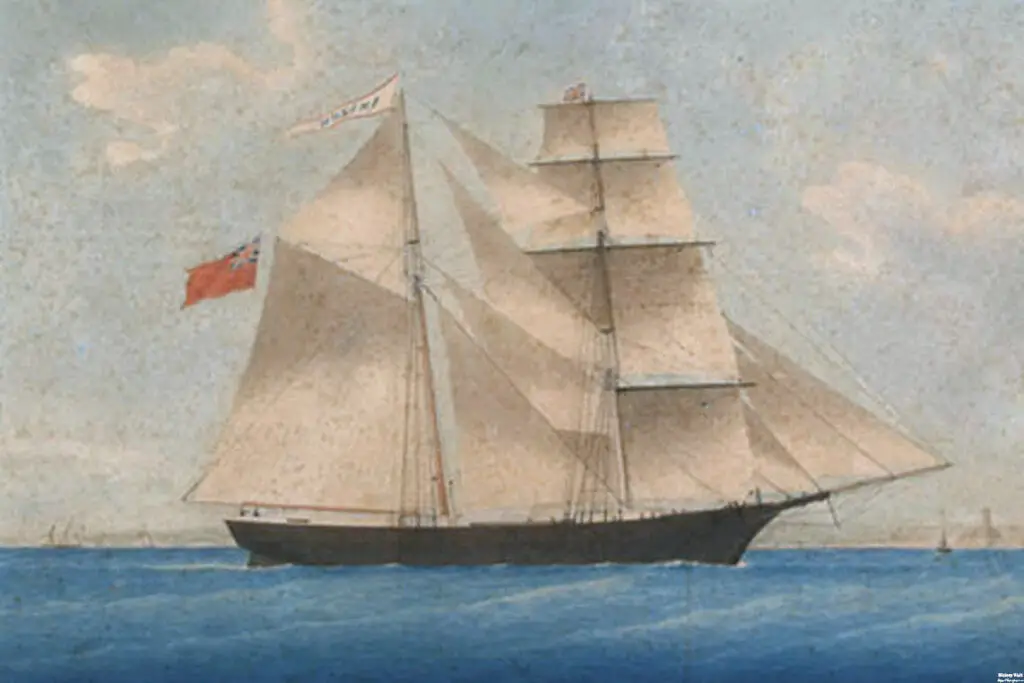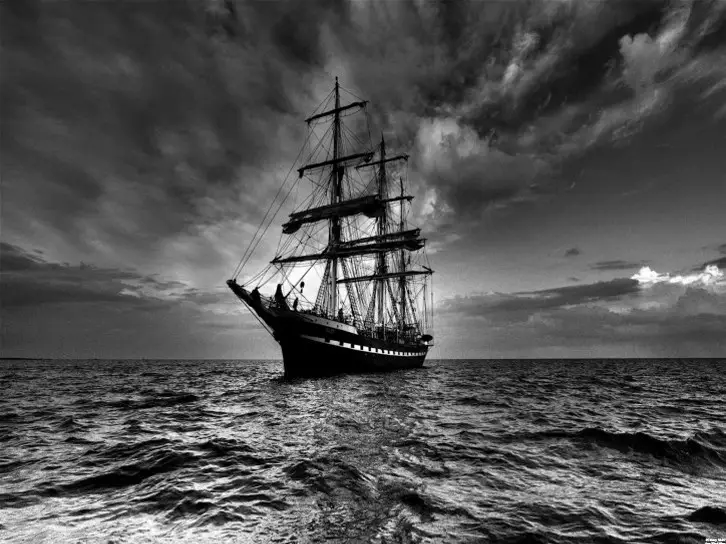The Enigma of the Mary Celeste: Exploring the Mystery of the Ghost Ship

Introduction
The Mary Celeste is one of the most enduring maritime mysteries of all time. Discovered adrift and deserted in the Atlantic Ocean on December 4, 1872, the ship has since become a symbol of nautical enigma and unsolved mystery. The tale of the Mary Celeste has captivated the imaginations of writers, researchers, and the general public for over a century, sparking numerous theories and speculations about the fate of its crew.
The significance of the Mary Celeste lies not only in the mystery of its abandoned state but also in the broader context of maritime history. The ship’s ghostly discovery raises questions about the dangers of sea travel in the 19th century, the reliability of historical records, and the human drive to solve perplexing puzzles. Each new theory about the Mary Celeste adds to the rich tapestry of its legend, ensuring that it remains a subject of fascination.
This article delves into the historical background and journey of the Mary Celeste, from its construction to the fateful voyage that left it adrift. We will examine the discovery of the ship, subsequent investigations, and the myriad theories that attempt to explain the crew’s disappearance. Through this exploration, we aim to shed light on the elements that contribute to the enduring allure of the Mary Celeste.
The Ship’s Origins

The Mary Celeste was originally constructed in Spencer’s Island, Nova Scotia, and launched under the name Amazon in 1861. Built as a cargo ship, the vessel had a tumultuous early career marked by a series of misfortunes, including multiple changes in ownership, collisions, and even a fire. Despite these setbacks, the ship was seaworthy and continued to operate under various owners and names.
In 1868, the Amazon was sold to American owners and underwent extensive repairs and renovations. It was during this period that the ship was renamed the Mary Celeste. The ship’s early history is significant because it sets the stage for the ill-fated voyage that would cement its place in maritime lore. Understanding the ship’s origins and previous voyages helps to contextualize the mystery that would later unfold.
The Mary Celeste’s construction and early history also reflect the broader maritime practices of the 19th century. Ships like the Mary Celeste were the backbone of international trade, and their crews faced numerous dangers and challenges. The story of the Mary Celeste is, in part, a story of the era’s maritime industry and the risks inherent in sea travel.
The Fateful Voyage
The final voyage of the Mary Celeste began on November 7, 1872, when it set sail from New York City bound for Genoa, Italy. The ship was captained by Benjamin Briggs, a seasoned mariner, and carried a cargo of 1,701 barrels of denatured alcohol. On board were Briggs, his wife Sarah, their two-year-old daughter Sophia, and seven crew members. The voyage appeared to start uneventfully, with no signs of trouble.
The ship’s planned route took it across the Atlantic Ocean, a journey that should have been routine for an experienced crew. However, something went drastically wrong. On December 4, 1872, the Mary Celeste was discovered adrift and deserted by the British brig Dei Gratia. The crew of the Dei Gratia found the ship in a disheveled but seaworthy condition, with the cargo largely intact and the crew’s personal belongings undisturbed.
The discovery of the Mary Celeste in such a state sparked immediate speculation and concern. There were no signs of a struggle or foul play, and the lifeboat was missing, suggesting the crew had abandoned ship voluntarily. The last entry in the ship’s log was dated November 25, over a week before its discovery, adding to the mystery. The unanswered questions surrounding the final voyage of the Mary Celeste have fueled countless theories and debates.
Discovery of the Mary Celeste

The sighting of the Mary Celeste by the Dei Gratia is a pivotal moment in the ship’s story. The crew of the Dei Gratia, led by Captain David Morehouse, noticed the Mary Celeste sailing erratically near the Azores. Upon closer inspection, they found the ship deserted, with no trace of the crew. The condition of the ship was puzzling: it was seaworthy, with sufficient provisions and no significant damage.
Inside the Mary Celeste, the cabins were disheveled, but there were no signs of violence or a hurried departure. The cargo of alcohol was mostly intact, although some barrels were later found to be empty or leaking. The ship’s lifeboat was missing, suggesting that the crew had abandoned ship, but the reasons for this decision remain unclear. The crew of the Dei Gratia sailed the Mary Celeste to Gibraltar, where an official inquiry was launched.
The discovery and subsequent investigation into the Mary Celeste added layers of complexity to the mystery. Initial reactions ranged from disbelief to suspicion, with various theories proposed to explain the crew’s disappearance. The absence of clear evidence left many questions unanswered, and the inquiry’s inconclusive findings only deepened the enigma surrounding the ghost ship.
Subsequent Investigations
Following the Mary Celeste’s arrival in Gibraltar, a formal investigation was conducted by the British authorities. The inquiry, led by Frederick Solly-Flood, the Attorney General of Gibraltar, sought to determine the cause of the abandonment and assess any possible foul play. Despite thorough examinations, the investigation yielded no definitive answers. The ship was seaworthy, the cargo was largely undisturbed, and there were no signs of violence.
Various theories were considered during the investigation, including mutiny, piracy, and insurance fraud. However, there was no evidence to support these claims. The inquiry’s findings were ultimately inconclusive, leaving the mystery unsolved. This lack of resolution has contributed to the enduring fascination with the Mary Celeste and the countless theories that have emerged over the years.
The ship was eventually released and continued to sail under new ownership, but its reputation as a ghost ship followed it. The Mary Celeste changed hands several more times and met a final, ignominious end when it was deliberately wrecked in an insurance scam in 1885. Despite its continued use, the mystery of the Mary Celeste’s abandoned voyage remained a subject of speculation and intrigue.
Theories and Speculations
The mystery of the Mary Celeste has given rise to numerous theories and speculations, each attempting to explain the crew’s disappearance. Natural explanations include weather-related events, such as storms or waterspouts, that could have prompted the crew to abandon ship. Mechanical failures, such as a water pump malfunction or a fear of an imminent explosion from the alcohol cargo, have also been proposed.
Human factors are another area of speculation. Some theories suggest that the crew might have mutinied or fallen victim to piracy. Others propose that Captain Briggs and his family, along with the crew, may have experienced a sudden panic, possibly due to a false alarm of fire or a natural disaster, leading them to abandon ship hastily. Despite these theories, no conclusive evidence supports any single explanation.
Paranormal and supernatural theories have also been suggested, ranging from ghost ship legends to alien abductions. While these ideas are often more fantastical than factual, they reflect the public’s fascination with the unknown and contribute to the mythos surrounding the Mary Celeste. The lack of definitive answers allows for a wide range of interpretations and keeps the mystery alive in popular imagination.
Conclusion

The enigma of the Mary Celeste remains one of the most captivating maritime mysteries in history. From its construction and early voyages to the fateful journey that left it adrift and deserted, the story of the Mary Celeste is filled with unanswered questions and intriguing possibilities. The discovery of the ship in such a perplexing state has fueled endless speculation and debate, ensuring that the mystery endures.
The various theories proposed to explain the crew’s disappearance highlight the complexity and allure of the mystery. From natural disasters and mechanical failures to human error and supernatural phenomena, each theory offers a glimpse into the possible fate of the Mary Celeste’s crew. However, the lack of definitive evidence means that the true story may never be known.
Despite the passage of time, the Mary Celeste continues to fascinate and inspire. Its story is a testament to the enduring power of mystery and the human desire to uncover the truth. As we continue to explore and speculate, the Mary Celeste remains a symbol of the unknown, a reminder of the sea’s vast and untamed nature, and a captivating chapter in maritime history.


